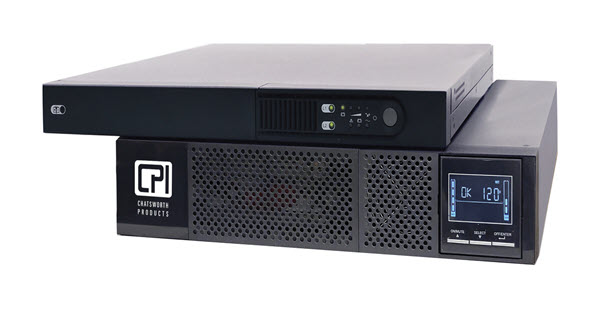How to Select Uninterruptible Power Supply - UPS
July 12, 2022
As an integral component of a data center or remote site power chain, the uninterruptible power supply (UPS) essentially provides clean power when AC power is present and provides backup power in the event of a power outage. But do you know the basics of selecting the appropriate UPS solutions for your application or space?
Let's explore the easy answers to a few key questions and explore a few best practices to help you make the right selection.
Typically, a UPS will help customers ride through a few minutes of outage, until a generator comes on or until equipment can be gracefully shutdown, which is when a computer is turned off by a software function and the operating system (OS) is allowed to perform its tasks of safely shutting down processes and closing connections, and is the opposite of a hard shutdown, when the computer is forcibly shut down by interruption of power.
In some select instances, the UPS can also provide power distribution for a limited amount of equipment.
So What Should I Do First?
Answer these four questions as you begin to research UPS options and solutions:
- What’s the total power capacity (kW) to be supported? NOTE: With most modern day equipment being power factor corrected, it is much more important to compare kW ratings as against kVA ratings.
- What’s the input voltage required – 120V or 208/240V?
- How long a runtime does your application require?
- How many outlets does your application require?
Which UPS Technology/Topology is Right for My Application?
To answer that question, first you should understand what the most common and useful UPS technology options are available on the market today. These include:
- Standby – in these instances, an AC blackout results in a total loss of utility power, there’s been a “power sag,” which is basically a short-term low voltage caused by starting inrush current or large equipment, utility switching, or a temporary overload, or there’s been a voltage surge, where short-term high voltage goes above 110% of nominal for several cycles.
- Line Interactive – line interactive UPS function in all the same scenarios as a standby UPS, but they also include Automatic Voltage regulation (AVR) that minimizes use of battery during overvoltage and brownout conditions.
- Double-Conversion Online – these include all the scenarios that standby and line-interactive UPS cover for, while also adding coverage for normal mode noise (when high frequency electrical waveforms between the line [L] and neutral [N] are caused by RFI or EMI interference), frequency variation, which means a frequency change occurs from nominal 60Hz or 50Hz, the switching transient, which occurs when there’s a fast high voltage spike with a short duration time, or harmonic distortion, which occurs when distortion of the nominal waveform is triggered by nonlinear loads such as rectifiers, switch mode power supplies or variable frequency drives.

Which Battery Technology is Right for My Application?
UPS solutions are typically offered in two battery configuration types, depending on the application need, size and goals. These are:
- Lead-Acid – provides reliable and cost-effective power protection for servers and network applications in the 800VA – 5000VA range.
- Lithium Ion – provides more than twice the life, higher temperature tolerance, longer runtime, and faster recharge when compared to typical lead-acid battery solutions.
Having considered the basics above, you'll be well on your way to ensuring reliable uninterrutiple power supply and battery backup that's designed to protect the integrity of your IT assets and ensure uptime.
To start exploring product options, be sure to learn more about the recently introduced UPS solutions from Chatsworth Products here.
Posted by Jeff Cihocki, Content Manager at 7/12/2022 5:27:57 AM